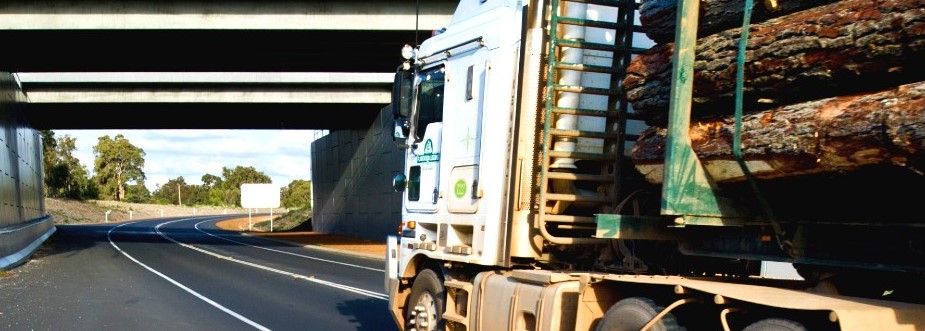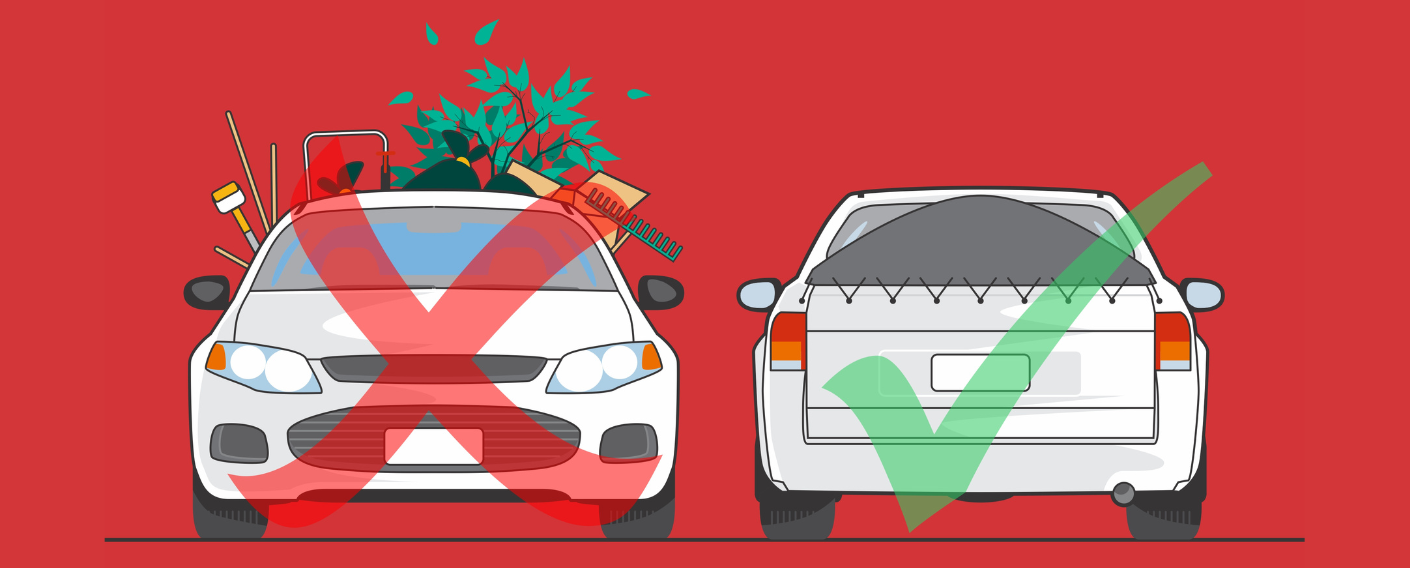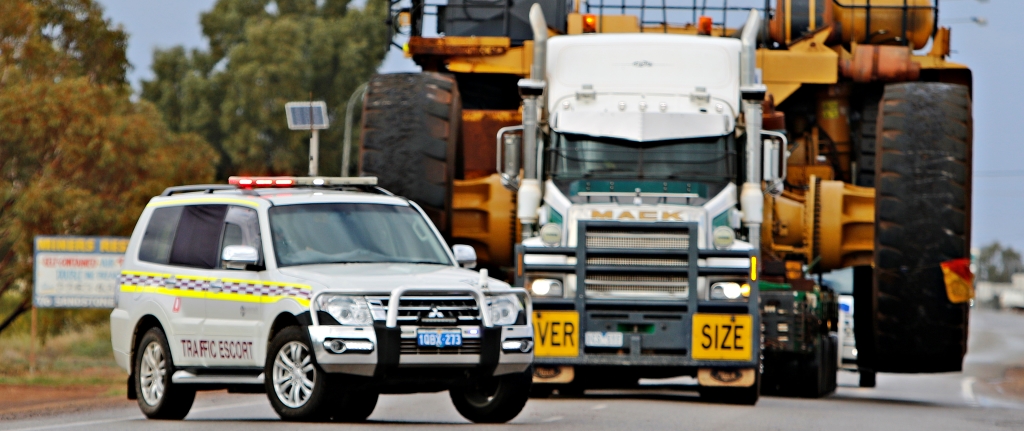Safety
Safe driving saves lives. Whether you're a light or heavy vehicle driver, motorcyclist, cyclist or pedestrian, we are all responsible for ensuring everyone has a safe and enjoyable journey on the road.

For the most up-to-date information on road safety, rules, statistics and more, visit the Road Safety Commission.
Sharing the road
Cars are not the only vehicles on our roads. You could also encounter heavy vehicles, motorcyclists, pedestrians, cyclists, wildlife and road workers. You may also need to know how to share a road when the lanes are electronically controlled.
Sharing the road requires patience and courtesy. We want to ensure all road users make it to their destinations safely.
It's an offence if your load isn't properly restrained and at risk of falling from your vehicle. From household goods to building materials and green waste, it's your responsibility to ensure these things are secured and restrained.
Why is this important?
- Debris can cause havoc on the roads which may result in lanes and roads being closed for cleanup.
- Drivers may need to swerve to avoid fallen items, which has the potential to cause a crash - or even worse serious injury or death.
- Debris can enter the environment and impact the native flora and fauna.
Here are some important tips to remember when securing a load:
- A heavy load is just as likely to fall off as a light one.
- No matter how many times you have done it in the past, always check that your load is properly restrained.
- Use good quality restraint equipment.
- Use a vehicle and suitable restraint equipment for the type of load you are carrying.
- Failure to restrain a load correctly may result in legal action, including a fine of up to $5,000.

Useful links
Be aware of pedestrians and cyclists when travelling on the road, and if you are a pedestrian and cyclist, be aware of the vehicles around you.
Pedestrians
Vehicles must give way to pedestrians
- when turning
- when making a u-turn
- at all intersections and stop signs
- at all pedestrian crossings
A green traffic signal does not automatically mean go. It is important to exercise caution around “high risk pedestrians” such as young children and adults older than 60.
Learn more about pedestrian road safety from the Road Safety Commission.
Cyclists
Cyclists are a vulnerable group of road users due to the increased risk of serious injury when using the paths and roads. They still share the same rights and responsibilities as drivers and must obey the road rules.
Helmets are compulsory for all cyclists in WA. It is also recommended that cyclists wear additional visibility accessories, such as reflective clothing or flashing light attachments.
Cyclists of all ages are allowed to ride on WA footpaths, but they should give pedestrians the right of way.
Drivers must maintain at least 1 m distance when overtaking cyclists and give way when crossing into bicycle lanes.
Learn the rules and recommendations for cyclist road safety from the Road Safety Commission.
Road workers and traffic controllers work in high-traffic environments, which can present many potential hazards. They may not have the protection of concrete barriers and truck mounted crash attenuators, leaving them in a very vulnerable position. It is the responsibility of all motorists to ensure they do their part in protecting these workers while they are out improving the road network.
With a record number of upgrades currently underway on our roads, you may come across roadwork sites on your journey. To ensure the safety of those working on the roads and other motorists, there are a number of things to be aware of:
Follow the signs
It’s important that you follow all roadwork signage, even if you can’t see anyone working on the road.
Signs will alert you when you are approaching a roadwork area. If there is a road worker directing traffic, stay alert and follow their directions.
Your speed is our safety
By law, you must follow the speed limit at all times, even when it’s reduced through roadwork areas.
Speed is not only reduced when road workers are on site, but also when there are -- loose stones
- temporary lane alignments
- slippery surfaces
- different road levels
- roadside hazards
- changes in the road layout or;
- a lack of line marking
Be roadwork aware, slow down and take care
It is everyone's responsibility to ensure that all workers on our roads make it home safely, just like you, they go to work every day and expect to return home safely when they’re done. Please remember to be roadwork aware, slow down and take care.
Large trucks are a common sight throughout WA. Oversize vehicles and road trains are frequent travellers in remote regional areas and require patience and courtesy.
Know what to do when it's bigger than you!

Similar to cyclists, motorcyclists are a vulnerable group of road users. They have little protection in the event of a crash. It is mandatory to wear a helmet in Western Australia and recommended to wear protective clothing.
It is important for drivers to be aware and check your blind spots for motorcyclists before merging or changing lanes.
Motorcyclists should also stay alert at all times and know all the rules of the road. According to WA crash data, in 60% of motorcycle crashes in 2016, there was no other vehicle involved.
Learn more about motorcycle safety tips and guides from the Road Safety Commission.
Wandering livestock wandering on roads in pastoral regions is a serious issue for drivers.
Stay alert and watch out for animals when driving, especially at dusk and dawn when they are most active.
Visit the straying livestock on roads page to see what we are doing, and what you can do to get to your destination safely.

Ducks & Swans
June to November marks breeding season for ducks and swans in Western Australia. This usually means you will see more ducks or swans and their offspring moving across pathways and roads, as they move from their nests to water.
Ducks, ducklings, or wildlife in general attempting to cross the freeway or other major roads can cause disruptions, but for your own safety do not go onto or near the edge of a road to rescue ducks. While the safety of the wildlife is important, your safety is paramount.
Slow down, stay in your car and wait for them to pass.
Learn more about duckling and cygnet crossing safety from WA Wildlife.
Roadside trading will not be permitted:
- Within the Metropolitan Region;
- On freeways or control of access highways;
- Within a Special Environmental Area (SEA); or
- In locations where the local government does not support the application.
- Within proximity of a town or roadhouse where local established businesses may be impacted. (refer to section 6.1.2)
- Other roads, or sections of road, as detailed in Appendix 3 due to concerns about safety, traffic volumes and/or composition.
In other locations, it is Main Roads’ policy to support roadside trading, provided that applicants can demonstrate that the proposed location:
- Is suitable for the proposed trading activity and will support fatigue management;
- Will not compromise the safety, capacity and efficiency of the road network;
- Will not have the potential to impact the environment; and
- Can meet the Conditions as listed in the Roadside Trading Policy and Procedure.